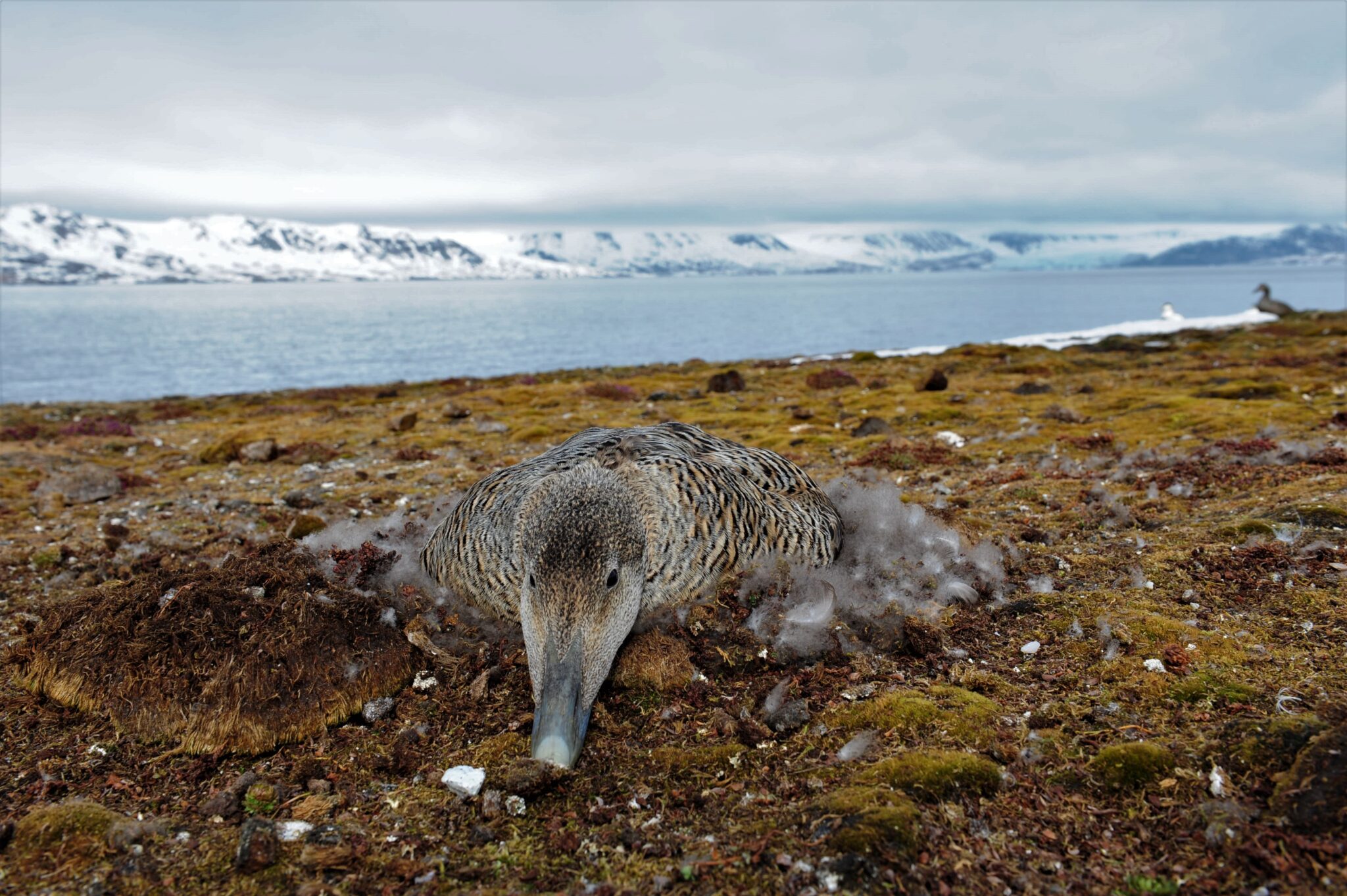Sea ice affects population dynamics in common eiders
In a study conducted in Kongsfjorden, Svalbard, researchers from SEAPOP have used a nearly 40 year-long data series to assess how changes in sea ice affect the breeding distribution of common eiders (Somateria mollissima).
A rapidly changing habitat
Sea ice is significant for the ecology of many arctic species. The Arctic is now heating up four times more quickly than any other place on earth, and we need to know the consequences the resulting sea ice melting will have for animals living in the region. This study focused on how changes in sea ice distribution in a High Arctic fjord have affected the population dynamics of common eiders breeding on different islands.
Long-term eider monitoring
In the study, long data series on the number of nests and average brood sizes in common eiders on islands in Kongsfjorden on the northwest coast of Svalbard were analysed. The data series covers the period from 1981 to 2020 and is among the longest time series for an arctic animal. Data on sea ice distribution and phenology came from direct observations in Kongsfjorden, and data on sea ice concentration were collected through large-scale remote sensing.
Affects the risk of predation
The analyses revealed that sea ice plays a key role in the ecology of Arctic-breeding common eiders by affecting the availability of breeding grounds and the predation risk from Arctic foxes (Vulpes lagopus). Reduction of sea ice led to the isolation of some islands in the early spring, thus reducing the risk of predation from foxes and thereby providing favourable breeding grounds. This, in turn, led to a redistribution of common eiders breeding in the fjord, with an increase in density of birds on some islands and a decrease on others.
The complex effects of ice melting
The study illustrates the complex and fine-scale effects of the disappearance of sea ice on arctic bird life and the role of predation in mediating these effects. It also underlines the importance of assessing intrapopulation variations in order to understand how climate change influences seabird populations.
Read the article:
Contact person: Sébastien Descamps, Norwegian Polar Institute, and Børge Moe,NINA


